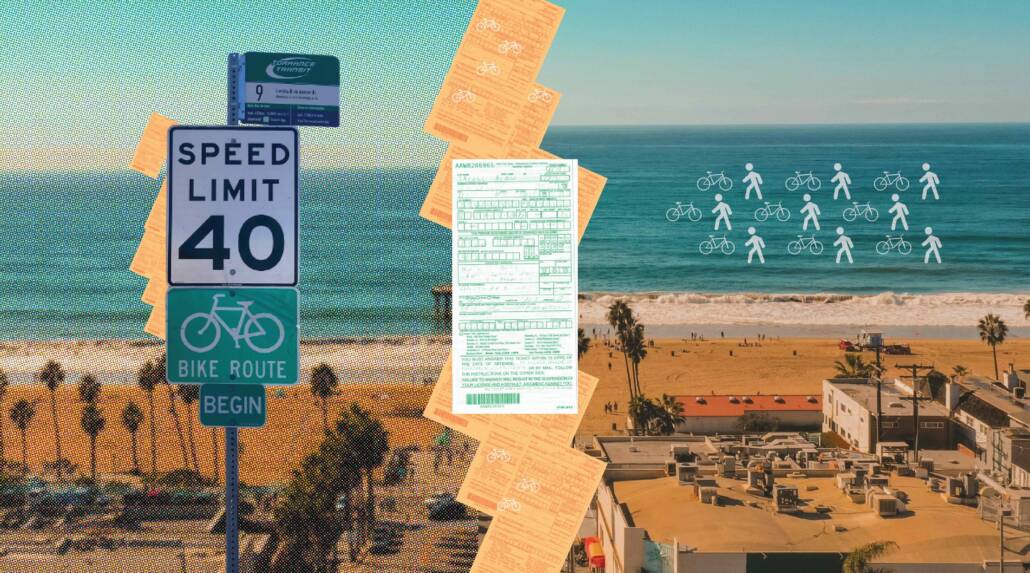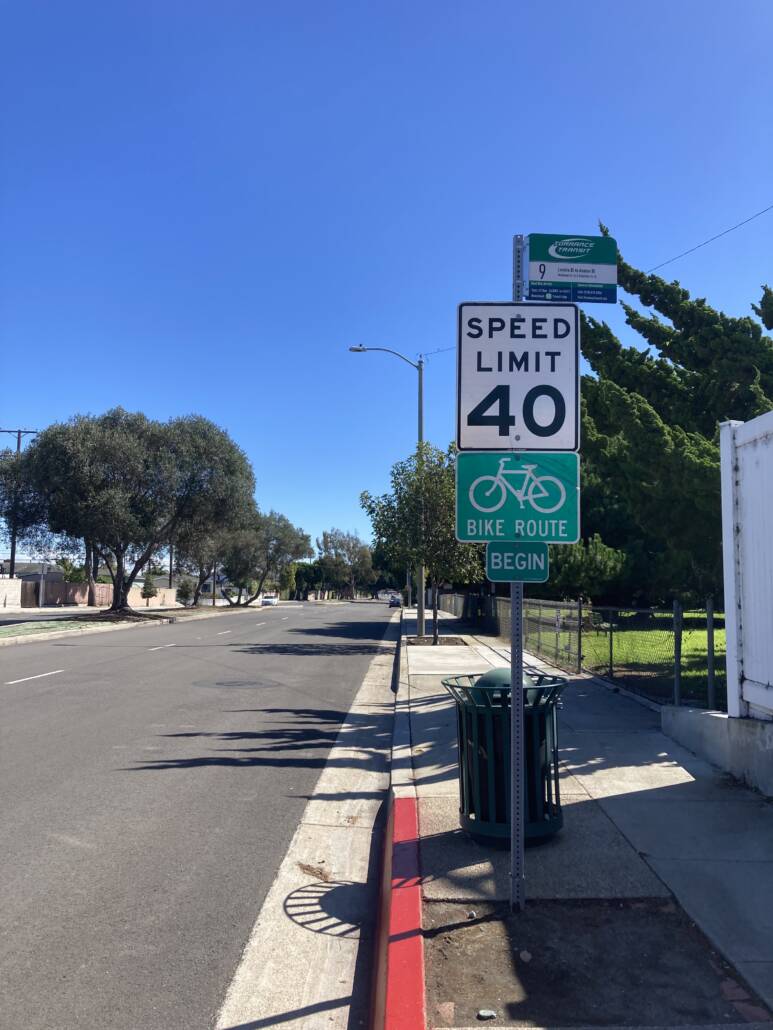The Last Mile Matters: Checking In on Recent Wins
CalBike has played a pivotal role in helping California pass some meaningful transportation safety laws in recent years. These were hard-fought, practical changes designed to make everyday travel safer for people biking and walking. But in traffic safety, passage is not the finish line. Implementation is.
As a statewide organization working with advocates, planners, and policymakers across California, CalBike often sees these implementation gaps emerge long before they show up in formal evaluations or crash data.
Daylighting: Dawn Has Arrived — Clarity Has Not
As of January 1, 2025, daylighting is required statewide under California’s Daylighting Law (AB 413, 2023). The law prohibits parking, stopping, or standing vehicles within 20 feet of the approach side of marked or unmarked crosswalks, or 15 feet where curb extensions are present. The goal is straightforward: improve sightlines at intersections so drivers, people biking, and people walking can see one another sooner, reducing turning conflicts and preventing crashes. Importantly, the rule applies even where there are no red curbs or “No Parking” signs.
In practice, enforcement and street design have been uneven. Some cities have relied on the law alone, leaving curb space visually ambiguous and enforcement inconsistent. Without clear markings or public guidance, compliance can feel optional and confusing.
Other cities have shown what effective implementation looks like. Emeryville’s “Take a Space, Save a Life” campaign pairs daylighting with clear curb treatments and public education, making it obvious where parking is prohibited and why it matters. That combination of outreach, warnings, and physical design has improved both safety and understanding. The lesson is simple: daylighting works best when cities pair the mandate with clear design and clear messaging.
CalBike is continuing to lift up examples like Emeryville’s and make visible implementation guidance with cities across the state so daylighting delivers on its life-saving promise everywhere.
The Omnibike Bill: Slowly Taking Hold
The Omnibike Bill (AB 1909, 2022) clarified several long-standing rules intended to better protect people biking on California streets. While these changes are now state law, many of the bill’s core provisions have yet to see consistent, proactive enforcement.
Change lanes to pass. Drivers are required to change lanes to safely pass people biking when it’s possible to do so. In practice, enforcement remains rare. Violations are more often cited after a crash than addressed through routine, proactive enforcement, limiting the law’s preventive impact.
Despite the clarity in the law in some jurisdictions, people on bikes are sometimes being asked to report violations themselves, placing the burden of enforcement on those already exposed to the greatest risk.
E-bikes on bikeways. State law makes it legal by default for all three classes of e-bikes (not e-motos) to operate on bikeways of all types. Local agencies can restrict or prohibit e-bike use by ordinance, but absent local action, access is allowed. This statewide baseline has become increasingly important as more cities consider tightening e-bike rules.
The challenge is how those local decisions play out in practice. Without clear communication and coordination, riders and law enforcement are left navigating a patchwork of rules that can change from city to city, or even block to block. In LA’s South Bay on the Greenbelt for instance, a single four-mile ride can pass through three jurisdictions with three different e-bike policies on the same shared path, undermining predictability and making safe, connected travel harder to achieve.
Bikes on leading pedestrian intervals (LPIs). Leading pedestrian intervals work because they’re easy to understand. People walking get a clear head start to cross, drivers see a red light, and the intersection briefly belongs to the most vulnerable users. Allowing people on bikes to proceed during the “Walk” phase builds on that same logic. Yet without clear guidance, signage, or data tracking, this commonsense safety tool remains underused and underpublicized, even where it’s already allowed.
So what does all of this look like where you live? Are these changes visible on your daily routes, or do they mostly exist on paper, legible to advocates but not yet to the people moving through their neighborhoods?
The holidays are a useful moment to widen that lens. Talk with friends and family who don’t think of themselves as “bike people.” Ask what they notice at intersections. Whether daylighting feels clear or confusing. Whether streets feel calmer, or just different in ways that are hard to name. These are the signals that tell us whether policy has crossed the threshold into everyday reality.
As we head into 2026, the work ahead isn’t solely about new laws. It’s about making the ones we’ve already passed visible, intuitive, and consistently applied across California. That’s how safety becomes normal. And that’s how the last mile gets closed.



